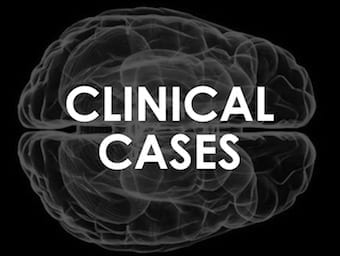
Look left, look right
An elderly woman had a fall. On examination she has an unusual constellation of eye movements. What's going on?

An elderly woman had a fall. On examination she has an unusual constellation of eye movements. What's going on?

A man is about to intubated for coma. What can be learned from a rapid neurological exam that includes assessment of eye movements? Could this be a pseudocoma?

You have an emotionally labile patient in the department who sounds like 'Donald duck'. Before rounding up some students to 'pimp' you decide to test yourself on bulbar and pseudobulbar palsies so that you don't get caught out...

The spinal patient from Microbial Mystery 005 has returned from the operating theatre. Within 15 minutes she is unconscious. What's going on?

You are asked to review a 65 year-old man who is comatose (GCS 3) with small pupils (2 mm bilaterally). He has a history of diabetes mellitus and bipolar disorder. He was discharged from hospital yesterday, following a surgical procedure.

4 more scenarios for Peter Gates Brainstem Rule of 4. Neurological lesion identification and neuro examination quiz

4 more scenarios for Peter Gates Brainstem Rule of 4. Neurological lesion identification and neuro examination quiz

Consider a 45 year-old HIV positive male with right hemiparesis and fluctuating conscious state. His CT head is shown below.

Coma-like Syndromes

ICU Acquired Weakness (ICUAW) includes critical illness myopathy (CIM); critical illness polyneuropathy (CIP), or a mixture of both (myopathy is typically predominant); very common in the mechanically ventilated (25-60% in those mechanically ventilated for > 7 days)

Nikolaus Friedreich (1825-1882) was a German neurologist and pathologist.

Pseudocoma is the term used for a patient feigning a comatose state, however it is sometimes also used for conditions like locked-in syndrome where patients may involuntarily appear unconscious but are actually self aware